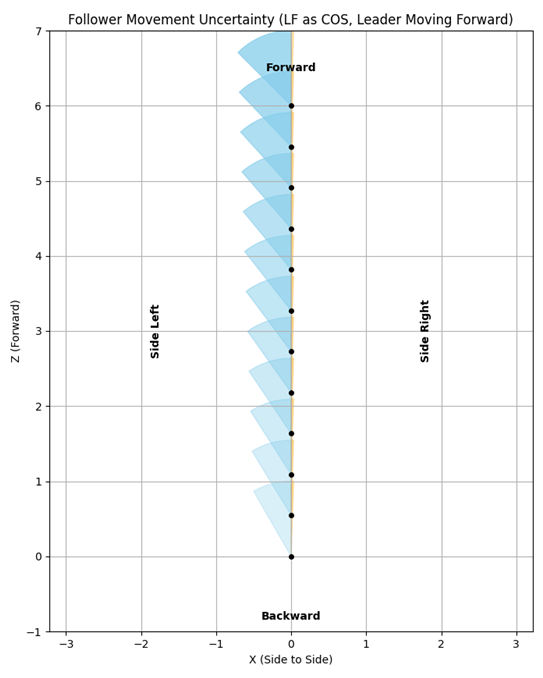A Fully Defined Timing Model for Follower Response in Swing Dances
In the Ballroom 'Swing' dances (Waltz, Foxtrot, Quickstep, Viennese Waltz), the follower’s movement on Beat 1 is governed by both musical cues and biomechanical constraints. Here's a clearly defined timing model that explains when, why, and how followers move — and how long they have to do it.
Timing Phases
| Phase | Duration (ms) | Description |
|---|---|---|
| **Pre-lowering** | -200 to -50 | Calm stillness; follower is poised and waiting. |
| **Lowering Cue** | -50 to 0 | Leader lowers center slightly — this is a ‘get ready’ signal. |
| **Early Prep** | overlaps -50 to 0 | Follower may begin retracting the RF, prepping subconsciously. |
| **Decision Window** | 0 to ~300 | Follower commits to where the RF will go. Pizza slice is locked. |
| **Step Execution** | 300 to 667 | RF travels. COG begins transitioning. No turning back! |
Action Types on a Beat
For any given beat of music, the following actions may occur:
- No action
- Start of an action
- Continuation of a previous action
- Completion of an action
These actions are informed by preparation, perception, and reaction timing.
Delay Model: Instinct + Physics
Let:
- Ts = Time spent preparing to act
- Te = Time required to end/reset after movement
- Tp = Perception + Reaction delay
- Tb = Duration of a beat (in ms)
- Ta = Available Action Time
General Equation:
Ta = Tb - (Ts + Te + Tp)
Real-World Waltz Example
Tempo: 30 MPM (Measures per Minute)
Time Signature: 3/4
→ Tb = 667ms per beat
Let’s assume:
- Ts = 150ms (preparation)
- Te = 100ms (cooldown or reset)
- Tp = 50ms (reaction time)
Then:
Ta = 667 - (150 + 100 + 50) = 367 ms
The follower has ~367ms of usable time to execute their movement.
📏 Travel Distance Example
If the follower travels at 1 meter/second, then:
d = v × t = 1.0 × 0.367 = 0.367 meters
So a typical follower could step just over one foot’s length in that time.
Kinetic Energy Example
Let:
- Mass m = 70kg
- Velocity v = 1.76 m/s
Then:
\(KE = \dfrac{1}{2} m v^2 = 0.5 × 70 × (1.76)^2 ≈ 108.6 Joules\)
This energy:
- Drives movement across the floor
- Must be redirected or dissipated between steps
- Can support flow, or cause collisions if unmanaged
Levels of uncertainty
As the follower travels they have increasing options as to where to place their moving foot. This is shown in the diagram below where Follower is moving backwards (from their perspective) and their moving foot has increase options as to where it can be placed.

Why This Matters (to you)
Most dance instruction focuses on what to do — not why it works.
This model:
- Explains the mechanics of follower response
- Reveals how long they have to act
- Helps instructors avoid vague cues like “just feel it”
- Creates a foundation for biomechanical choreography and teaching
Quote of the Day
“Here’s the physics and math. Prove it wrong.”